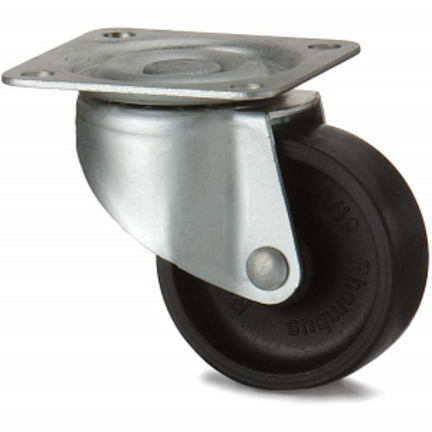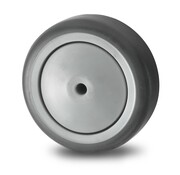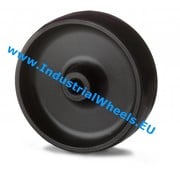Furniture Castors & Rollers - Light & Heavy Duty Industrial Wheels for Furniture

Both wheels and castors are meant to be attached to a larger object so that the object can be moved with ease.
However, there is a considerable difference between these two objects. A wheel is limited with just one spinning direction because it just has one axis. On the other hand, a castor is more sophisticated. It contains a wheel in its design, but because of a flexible mounting system, it can move in different directions. Furniture castors are most recommended for objects that should be moved easily.
Benefits of Using Furniture Castors
Integrating furniture castors into your living or working space offers a multitude of benefits. Let's explore some of the advantages that make furniture castors a worthwhile investment:
-
Enhanced Mobility: The primary benefit of furniture castors is the ability to effortlessly move and reposition your furniture. Whether you need to rearrange your living room layout, create more space for an event, or access hard-to-reach areas for cleaning, castors provide the flexibility to do so with ease.
-
Convenience and Flexibility: With furniture castors, you can quickly adapt your space to accommodate changing needs. Easily transform a dining area into a home office, convert a bedroom into a workout space, or create versatile seating arrangements for gatherings. Castors allow you to customize and optimize your space according to your requirements.
-
Protection for Floors: High-quality furniture castors are designed with floor protection in mind. They minimize the risk of scratches, scuffs, or dents on your floors, especially hardwood, laminate, or tile surfaces. By choosing the appropriate castor type and material, you can ensure smooth movement without causing damage to your flooring.
-
Efficient Cleaning: Furniture with castors makes cleaning a breeze. By moving furniture items, you can access hidden corners, vacuum underneath, or wipe down surfaces more effectively. This saves time and effort in maintaining cleanliness and hygiene in your living or working environment.
-
Versatility in Design: Furniture castors come in various styles, materials, and sizes, allowing you to find options that seamlessly blend with your furniture aesthetics. Whether you prefer a modern, industrial look or a classic, traditional design, there are castors available
Furniture castors are an excellent choice for almost any type of furniture, especially when this furniture must be moved often.
Installation and Maintenance of furniture castors
Proper installation and maintenance of furniture castors is essential for optimal performance and longevity. Follow these guidelines to ensure successful installation and maintenance of your furniture castors:
Installation:
- Start by preparing the furniture legs or base. Clean any debris or dust that may interfere with the castor attachment.
- Determine the mounting method based on the type of castors you have. If using threaded stem castors, screw them directly into the pre-drilled holes. For plate mount castors, position the mounting plate on the furniture and secure it with screws or bolts.
- Ensure that the castors are securely attached and tightened to prevent wobbling or instability.
- Test the mobility of the furniture after installation to ensure smooth movement and proper functionality of the castors.
Regular Cleaning:
- Keep your furniture castors clean to maintain optimal performance. Regularly remove any dust, dirt, or debris that may accumulate on the wheels and swivel mechanism.
- Use a soft cloth or brush to gently wipe away dirt particles. If necessary, use a mild soap solution to clean the castors, followed by thorough drying.
- Avoid using harsh chemicals or abrasive cleaners that may damage the castor materials.
Lubrication:
- Lubricate the castor wheels and swivel mechanism periodically to ensure smooth rotation and reduce friction.
- Use a silicone-based lubricant or specialized castor oil to apply a small amount of lubrication to the moving parts.
- Follow the manufacturer's instructions regarding lubrication frequency and recommended products.
Inspection and Replacement:
- Regularly inspect the condition of your furniture castors to identify any signs of wear, damage, or malfunction.
- Check for cracks, deformation, or excessive wheel tread wear. If any issues are detected, consider replacing the castors promptly to maintain the mobility and stability of your furniture.
- Refer to the manufacturer's guidelines for specific recommendations on the lifespan and replacement intervals of the castors.
- By following these installation and maintenance practices, you can ensure that your furniture castors function optimally and provide long-term usability for your furniture pieces.
What furniture castor wheels do you need
We offer every possible furniture castor wheel, including tailor-made wheels, for your unique needs. We can fit the following types of furniture castors:- Castor wheels with one wheel or double wheel castors (see apparatus wheels)
- Furniture castor wheels with plate fitting, nylon expander fitting or bolt hole fitting
- Furniture castors with plastic wheels or solid rubber TPR tread
- Furniture castors with a plain bearing or ball bearing
- Castor wheels with or without brakes
- Furniture castor wheels of standard quality or outstanding quality (see apparatus wheels)
- Furniture castor wheels for medical equipment (see apparatus wheels)
-
Wheel, Ø 100mm, thermoplastic rubber grey non-marking, 80KG
Institutional Wheel from thermoplastic rubber grey non-marking, precision ball bearing, Wh...
-
-
Wheel, Ø 100mm, Polypropylene Wheel, 80KG
Institutional Wheel from Polypropylene Wheel, plain bearing, Wheel-Ø 100mm, 80KG
-
-
Wheel, Ø 75mm, Polypropylene Wheel, 75KG
Institutional Wheel from Polypropylene Wheel, plain bearing, Wheel-Ø 75mm, 75KG
-
-
Wheel, Ø 50mm, Polypropylene Wheel, 50KG
Institutional Wheel from Polypropylene Wheel, plain bearing, Wheel-Ø 50mm, 50KG
-





